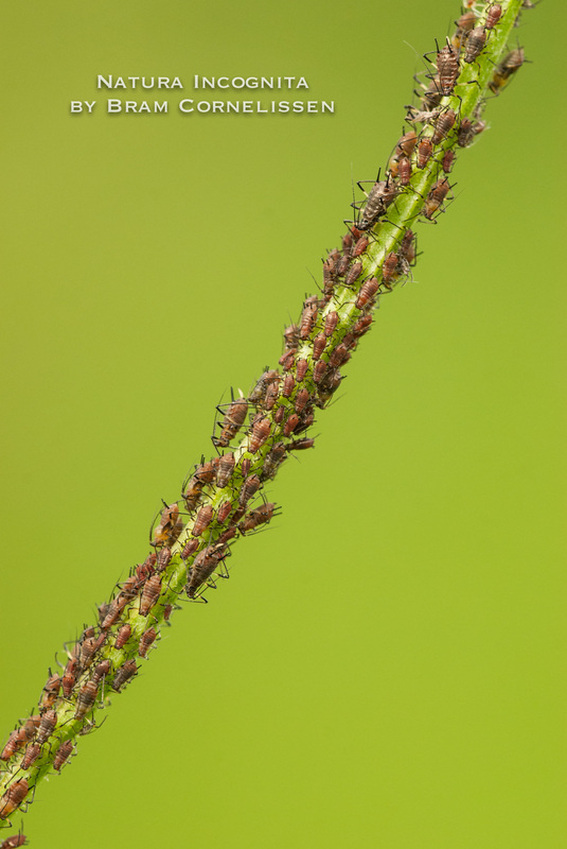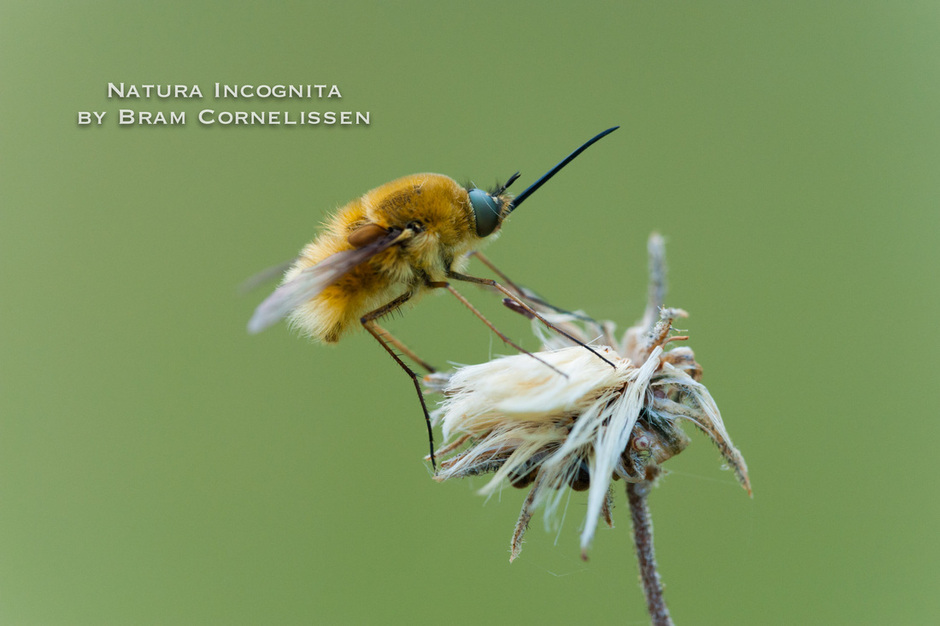Six-Legged Wonders
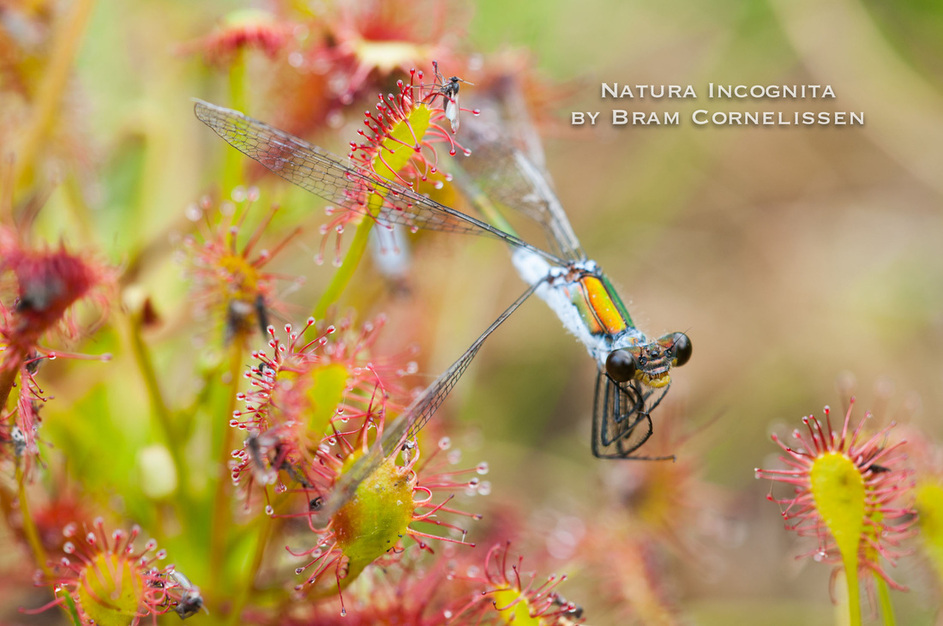
Sundew (Drosera intermedia) can transform the miniature landscape into an apocalyptic sight. This plant often grows on nutrient poor soils. To compensate for the lack of nutrients, it gathers vital minerals from insects that get stuck to its sticky leaves. It's quite a cunning process. Once an insect gets stuck to a tentacle, some formic acid secreted from the leaves dissolves simple proteins of the unlucky one. These proteins are a signal for other tentacles to move towards the soon to be meal. The tentacles then secrete a digestive fluid that will dissolve the proteins in the insect. Only the undigestible part like the chitin skeleton remain. hereafter the tentacles dry up and the remains are left for the wind to carry them off. I guess a big target like this Damsel Fly (Lestes sponsa) take quite a lot of time to digest.

This common yellow dung fly (Scatophaga stercoraria) holds a secret. It might look like an acrobatic pose, but rather this fly has succumbed to a fungal infection. The fungus infiltrates the body of the fly. And then, just before it dies, the fly turns up side down clinging to a plant. The fungus develops spores on the abdomen of the fly, which due to the acrobatic pose are then easily carried off by the wind.
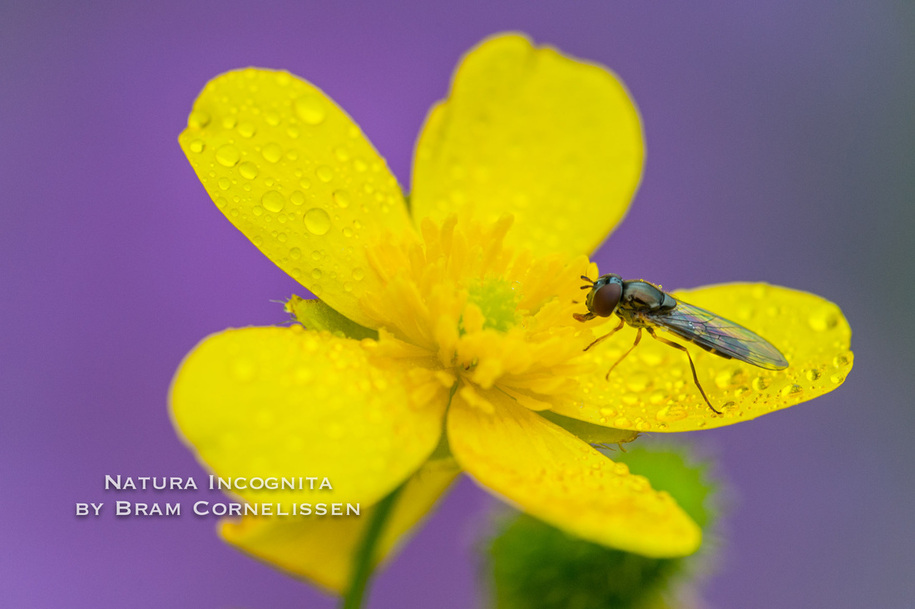
A Syrphid fly is eating from a Buttercup flower (Ranunculanceae) on a rainy day in April. Some syrphids are capable of eating pollen by bruissing it first. This is in contrast to most flies which are only able to eat fluids such as nectar. The presence of purple Asteraceae in the background gave the scene a nice sense of spring. This picture was taken on Tenerife and since I'm quite unfamiliar with the endemics of the island. I dare not wage any money on the species' names!
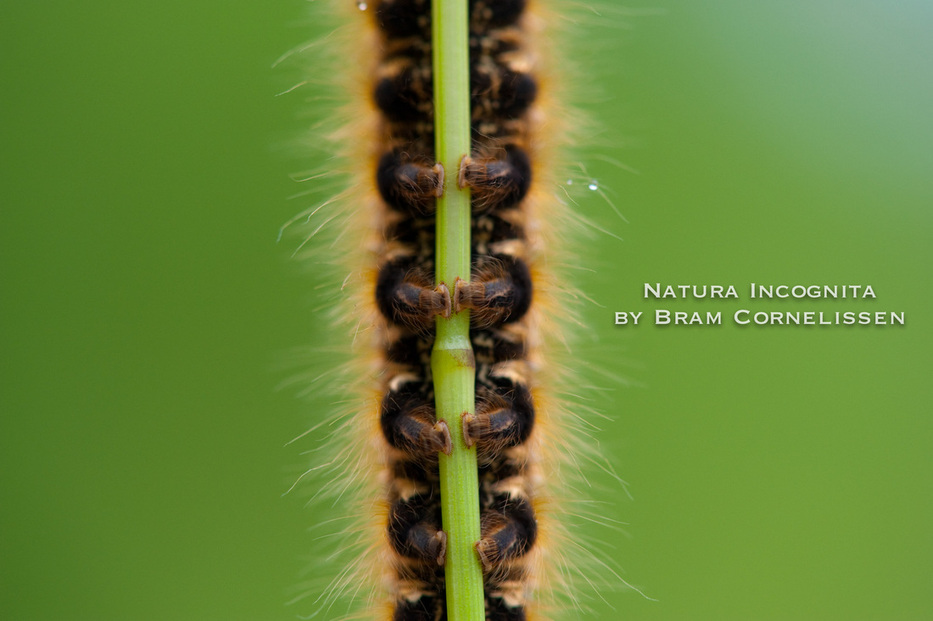
A caterpillar (Lasiocampidae) is working its way to the top in a fine coordinated shuffle. Although they work and look like legs, technically the legs on the abdomen of a caterpillar are false legs. Yet these lumps of fatty tissue have become fine instrument to grab stuff. Like a grass stem for example.

